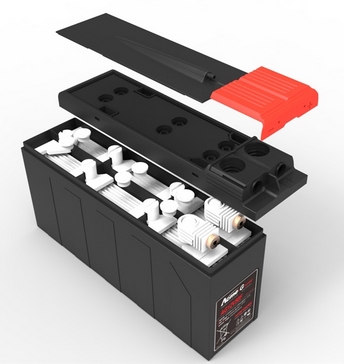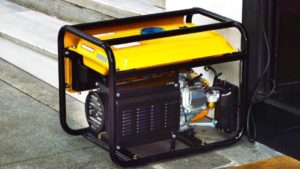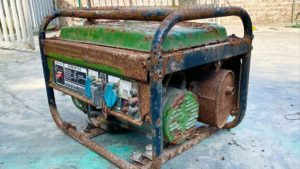When it comes to selecting a deep cycle battery for your off-grid renewable energy system or electric vehicle, understanding the differences between flooded, AGM, and gel batteries is important.
While all three types share the same goal of providing reliable power, they differ in their design, maintenance requirements, and performance characteristics.
Flooded batteries are the most traditional option but require regular watering; AGM (absorbent glass mat) batteries offer improved reliability and low maintenance needs, while gel batteries provide a more stable voltage and a longer lifespan.
By understanding these differences, you can choose the best battery for your specific needs and ensure optimal performance for years to come.
Let’s dive deeper into each type of deep cycle battery and explore their pros and cons so that you can make an informed decision for your energy or transportation needs.
Construction
Flooded batteries are made with a grid of lead plates separated by a liquid electrolyte, while AGM (absorbent glass mat) and gel batteries are made with a fiberglass or polyester mat that is saturated with a sulfuric acid solution.
The electrolyte is a solution of sulfuric acid and water, which is able to flow freely between the plates to facilitate the chemical reaction that produces electricity.
AGM (absorbent glass mat) batteries, on the other hand, are made with a fiberglass or polyester mat that is saturated with a sulfuric acid solution.
This mat absorbs the electrolyte and helps to maintain a consistent acid strength throughout the battery.
Gel batteries are similar to AGM batteries, but instead of a fiberglass or polyester mat, they use a gel-like substance to hold the electrolyte in place.
This gel is made of a mixture of sulfuric acid and a polymerizing agent that helps to prevent the electrolyte from flowing or leaking.
All of these types of batteries are commonly used in automotive and industrial applications, but they have some key differences that make them more suitable for certain applications.
For example, AGM and gel batteries are more resistant to vibration and temperature fluctuations than flooded batteries, but they are also more expensive and may have a shorter lifespan.
Efficiency
Flooded batteries have a higher self-discharge rate and require more frequent maintenance than AGM and gel batteries.
Flooded batteries, also known as wet batteries, have a higher self-discharge rate and require more frequent maintenance compared to AGM (absorbed glass mat) and gel batteries.
Self-discharge is the natural process of a battery losing its charge over time, even when it is not in use.
Flooded batteries have a higher self-discharge rate due to their construction, which can result in a shorter shelf life and more frequent maintenance.
For example, a flooded battery that is not used for six months may lose up to 20% of its charge, while an AGM or gel battery may lose only 5% or less.
The acid in flooded batteries can evaporate and create a gas buildup, which can lead to increased internal resistance and reduced performance.
To maintain a flooded battery’s health, it is essential to check the water level and charge regularly, and to perform equalization charges every 1-3 months to prevent the buildup of sulfation.
By contrast, AGM and gel batteries are more resistant to self-discharge and require less maintenance, making them a more convenient option for many applications.
Lifespan
AGM and gel batteries have a longer lifespan than flooded batteries due to their controlled electrolyte system.
AGM (Absorbent Glass Mat) and gel batteries offer a longer lifespan compared to traditional flooded batteries due to their controlled electrolyte system.
In AGM batteries, the electrolyte is absorbed into a fiberglass or polyester mat, which allows for more precise control over the electrolyte levels and prevents spills or leaks.
This controlled environment reduces the risk of corrosion and increases the battery’s lifespan.
Similarly, gel batteries use a gel-like electrolyte that is suspended within the battery plates, providing a consistent and controlled level of electrolyte throughout the battery’s life.
This controlled electrolyte system helps to prevent overcharge, over-discharge, and excessive heat buildup, all of which can reduce the battery’s lifespan.
As a result, AGM and gel batteries can last up to three times longer than flooded batteries, making them a more reliable and cost-effective option for applications that require a long battery life.
Cost
Flooded batteries are generally less expensive than AGM and gel batteries.
Flooded batteries are a popular choice for those looking for an affordable option for their energy storage needs.
One of the main advantages of flooded batteries is their cost-effectiveness.
Compared to AGM (absorbed glass mat) and gel batteries, flooded batteries are generally less expensive.
This is because they do not require the use of expensive materials or manufacturing processes, such as those needed for AGM and gel batteries.
Instead, flooded batteries are made with a simple design that involves a lead acid plate and a glass fiber grid.
This simplicity translates to a lower cost for the consumer.
Flooded batteries are easy to maintain and can be replenished with water, making them a cost-effective option for those who are looking for a reliable and affordable battery solution.
Maintenance
AGM and gel batteries require less maintenance than flooded batteries, as they have a sealed acid system that is less prone to spills and leaks.
AGM (Absorbent Glass Mat) and gel batteries offer less maintenance compared to flooded batteries, as they have a sealed acid system that is less prone to spills and leaks.
Unlike flooded batteries, which require regular watering and checking of electrolyte levels, AGM and gel batteries have a maintenance-free design that ensures a consistent and stable power supply.
The sealed acid system in these batteries prevents the acid from escaping, reducing the risk of spills and leaks.
This means that you can enjoy a hassle-free battery life, with less mess and less frequent maintenance.
The advanced technology used in AGM and gel batteries ensures a longer lifespan and improved performance, making them a worthwhile investment for any application that requires a reliable power source.
Performance
AGM and gel batteries have a higher performance level than flooded batteries due to their controlled electrolyte system, which provides more consistent and reliable power.
AGM (absorbent glass mat) and gel batteries offer a significant performance upgrade over traditional flooded batteries due to their controlled electrolyte system.
In flooded batteries, the electrolyte is free to flow and circulate within the battery, which can lead to inconsistent power delivery and reduced overall performance.
In contrast, AGM and gel batteries feature a controlled electrolyte system that is carefully regulated to ensure a more consistent and reliable power supply.
This is achieved through the use of a proprietary absorption material in AGM batteries or a gel-like electrolyte in gel batteries, both of which are designed to maintain a consistent and stable electrolyte level.
As a result, AGM and gel batteries deliver more reliable and consistent power, making them ideal for high-drain devices such as power tools, medical equipment, and high-end automotive systems.
These batteries are less prone to damage from spills, vibrations, and extreme temperatures, further enhancing their overall performance and longevity.
Depth of Discharge
AGM and gel batteries can be deeply discharged without causing damage, while flooded batteries should not be deeply discharged to avoid damaging the plates.
Deep discharge of AGM (absorbed glass mat) and gel batteries is permissible without causing damage, but flooded batteries should not be deeply discharged.
Deep discharge can shorten the life of flooded batteries by damaging the lead plates, whereas AGM and gel batteries are designed to withstand deep discharges without affecting their performance.
In fact, deep discharge can increase the overall lifespan of AGM and gel batteries.
However, it’s important to note that extreme deep discharges can still cause damage to the battery’s components.
When in doubt, consult the manufacturer’s guidelines to avoid any potential harm to your batteries.
Temperature Range
AGM and gel batteries perform better in extreme temperatures than flooded batteries, which can be affected by temperature fluctuations.
AGM and gel batteries outperform flooded batteries in extreme temperatures, making them the ideal choice for applications that require consistent power supply in challenging environments.
While flooded batteries can be affected by temperature fluctuations, AGM and gel batteries are designed to perform optimally in extreme temperatures, ensuring uninterrupted power delivery.
This is because AGM and gel batteries use a gas recombination system that helps maintain a stable internal environment, regardless of the temperature.
The sealed design of these batteries prevents water loss due to evaporation, which can be a significant issue in high-temperature environments.
As a result, AGM and gel batteries deliver superior performance and longer lifetimes compared to flooded batteries in extreme temperatures, making them the go-to choice for applications such as off-grid energy systems, heavy machinery, and automotive starting.
Want More? Dive Deeper Here!
Hey there! If you’re the type who loves going down the rabbit hole of information (like we do), you’re in the right spot. We’ve pulled together some cool reads and resources that dive a bit deeper into the stuff we chat about on our site. Whether you’re just killing time or super into the topic, these picks might just be what you’re looking for. Happy reading!






